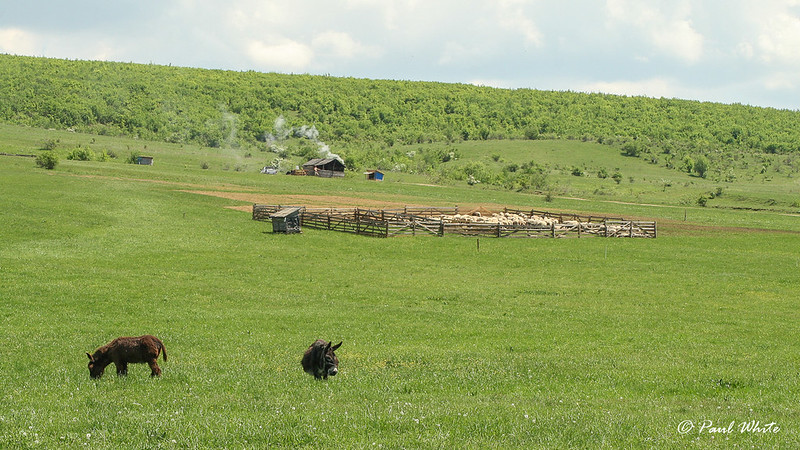Donkeys are regularly seen with shepherds in Romania. They compliment the deterrence provided by livestock guardian dogs (LGD) from depredations by wolves and bears. What you can't see in this photo are the large number of dogs guarding the flock. So what role does the donkey play?
They are very sensitive to the presence of predators and kick up an enormous and noisy fuss when they approach the flock. They are especially useful at night when it's dark and quiet. That said, they are never used as a substitute to livestock guardian dogs.
Recently I've seen a worrying trend in online debate about replacing LGD's with donkeys because it's believed by some, that they'd be less of a danger to humans walking near to or passing a flock. Yes, a donkey can be incredibly feisty and noisy but they are no match for a top apex predator.
Even LGD's are occasionally killed by wolves if not adequate in numbers and strength, so what chance would donkeys have? Shepherds have honed their skills over generations of experience, so the necessary knowledge on how to effectively protect livestock is already available to anyone wanting to learn more.
I have always been a proponent of human shepherd presence when packs of LGD's are used to protect unfenced flocks/herds in the mountains. The shepherd not only increases the effectiveness of the deterrent to repel predators but also reduces the potential danger to passing walkers who do not know how to deal with approaching LGD's.
So we shouldn't be thinking in terms of replacing dogs with donkeys and eliminating the presence of a human shepherd. Yes, it's an additional cost to the farmer but not as costly as losing your flock or herd. Shepherds not only care for the livestock in their charge, but also milk sheep daily and make cheese. This is a traditional way of life and they provide society with some very high quality food products.
We have few walkers in our location, mainly due to the large local population of bears. But in those areas where large predators are returning (such as wolves in rewilding programmes), teaching walkers and cyclists about LGD etiquette is just as important as education about coexisting with bears and wolves. They go hand in hand.


